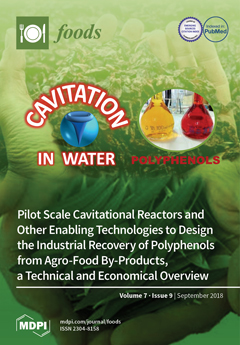Increasing interest in flavonoids in kiwifruit is due to the health-promoting properties of these bioactives. Inhibition of the angiotensin-converting enzyme (ACE) is one of the main therapeutic targets in controlling hypertension. The present study investigated the ACE inhibitory activity of flavonoid-rich extracts obtained from different kiwifruit genotypes. The flavonoid-rich extracts were prepared from fruits of
Actinidia macrosperma,
Actinidia deliciosa cv Hayward (Green kiwifruit), and
Actinidia chinensis cv Hort 16A (Gold kiwifruit) by steeping the lyophilized fruit samples in 70% aqueous acetone, followed by partitioning the crude extracts with hexane. The composition of each extract was analyzed using ultrahigh-performance liquid chromatography-mass spectrometry (UPLC-MS/MS). The ACE inhibitory activity of the fruit extracts was performed using a fluorescence-based biochemical assay. The subclass flavonol was the most abundant group of flavonoids detected in all the extracts tested from three different kiwifruit cultivars. Quercetin-3-
O-galactoside, quercetin-3-
O-glucoside, quercetin-3-
O-rhamnoside, quercetin-3-
O-rutinoside, quercetin-3-
O-arabinoglucoside, catechin, epigallocatechin gallate, epigallocatechin, chlorogenic, ferulic, isoferulic, and caffeic acid were prominent phenolics found in
A. macrosperma kiwifruit. Overall, the flavonoid-rich extract from
A. macrosperma showed a significantly (
p < 0.05) high percentage of inhibition (IC
50 = 0.49 mg/mL), and enzyme kinetic studies suggested that it inhibits ACE activity in vitro. The kiwifruit extracts tested were found to be moderately effective as ACE inhibitors in vitro when compared to the other plant extracts reported in the literature. Further studies should be carried out to identify the active compounds from
A. macrosperma and to validate the findings using experimental animal models of hypertension.
Full article






